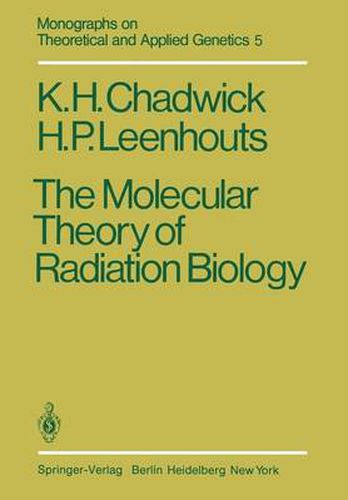Readings Newsletter
Become a Readings Member to make your shopping experience even easier.
Sign in or sign up for free!
You’re not far away from qualifying for FREE standard shipping within Australia
You’ve qualified for FREE standard shipping within Australia
The cart is loading…






This title is printed to order. This book may have been self-published. If so, we cannot guarantee the quality of the content. In the main most books will have gone through the editing process however some may not. We therefore suggest that you be aware of this before ordering this book. If in doubt check either the author or publisher’s details as we are unable to accept any returns unless they are faulty. Please contact us if you have any questions.
In late 1971 we were involved in a study of the interaction of radiation with matter and were trying to use measurements of radiation fluorescence in biological molecules to indicate how radiation affected living cells. It soon became apparent that we were working in the dark; the doses we used to get a significant signal were too large to be of interest for radiation biology and although the DNA molecule appeared to be the most likely target molecule we did not know which sort of events and which sort oflesions were the most important. We decided to alter our approach to see if we could find any consistent mathematical order in the radiobiological dose relationships. We found that cell survival curves could be very usefully described by a linear-quadratic dose relationship and very soon came to the somewhat premature but, as it turned out, most effective conclusion that the induction of DNA double strand breaks should be linear-quadratic. In deciding that the DNA double strand break was the crucial and all-important lesion we were able to associate the mathematical analysis with the biology of the cell and were able to relate known properties of the DNA molecule to known radiobiological effects. On the other hand, we were restricted and brought, from an abstract two-hit lesion which could have any property one wished, down to earth, to a defined moleccular structure of nanometer dimensions and well-known functions and properties.
$9.00 standard shipping within Australia
FREE standard shipping within Australia for orders over $100.00
Express & International shipping calculated at checkout
This title is printed to order. This book may have been self-published. If so, we cannot guarantee the quality of the content. In the main most books will have gone through the editing process however some may not. We therefore suggest that you be aware of this before ordering this book. If in doubt check either the author or publisher’s details as we are unable to accept any returns unless they are faulty. Please contact us if you have any questions.
In late 1971 we were involved in a study of the interaction of radiation with matter and were trying to use measurements of radiation fluorescence in biological molecules to indicate how radiation affected living cells. It soon became apparent that we were working in the dark; the doses we used to get a significant signal were too large to be of interest for radiation biology and although the DNA molecule appeared to be the most likely target molecule we did not know which sort of events and which sort oflesions were the most important. We decided to alter our approach to see if we could find any consistent mathematical order in the radiobiological dose relationships. We found that cell survival curves could be very usefully described by a linear-quadratic dose relationship and very soon came to the somewhat premature but, as it turned out, most effective conclusion that the induction of DNA double strand breaks should be linear-quadratic. In deciding that the DNA double strand break was the crucial and all-important lesion we were able to associate the mathematical analysis with the biology of the cell and were able to relate known properties of the DNA molecule to known radiobiological effects. On the other hand, we were restricted and brought, from an abstract two-hit lesion which could have any property one wished, down to earth, to a defined moleccular structure of nanometer dimensions and well-known functions and properties.